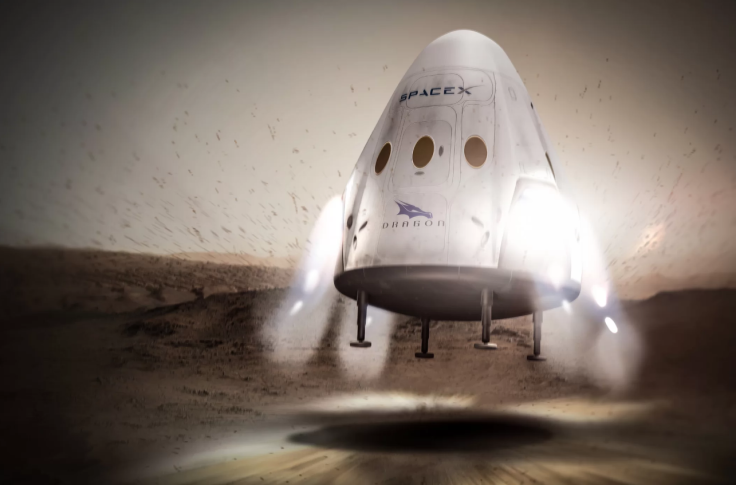Elon Musk says SpaceX is changing its plans for powered Dragon landings on Mars
Musk said the team is taking a different approach to landing spacecraft on Mars.

SpaceX CEO Elon Musk revealed on Wednesday (19 July) that the company was changing its plans to launch and land its Dragon capsule on Mars by 2020. The space company is developing the Red Dragon capsule for low-cost Mars lander missions to be launched using Falcon Heavy rockets.
The Red Dragon spacecraft under development for Nasa's commercial crew programme was initially intended to be capable of powered landings and "propulsively decelerate from supersonic speeds" and safely lower itself to touch down on Mars using a high-thrust retro-propulsion system. The company also planned to include four landing legs on the Red Dragon modified for the Martian surface and environment.
When asked about Red Dragon's propulsion landing capability at the International Space Station Research and Development Conference in Washington DC, Musk said the team was taking a different approach to landing vehicles on Mars.
"That was a tough decision," Musk said. "The reason we decided not to pursue that heavily is that it would have taken a tremendous amount of effort to qualify that for safety for crew transport.
"There was a time when I thought the Dragon approach to landing on Mars, where you've got a base heat shield and side mounted thrusters, would be the right way to land on Mars. But now I'm pretty confident that is not the right way."
Musk said the modified Dragon 2 spacecraft was still "technically" capable of landing propulsively rather than floating down via parachutes.
"Although you'd have to land it on some pretty soft landing pad because we've deleted the little legs that pop out of the heat shield," Musk said.
However, Musk noted that SpaceX has come up with a "far better" approach to landing on Mars that will be incorporated into the company's future spacecraft and rockets.
"That's what the next generation of SpaceX rockets and spacecraft is going to do, so just the difficulty of safely qualifying Dragon for propulsive landings, and the fact, from a technology evolution standpoint, it was no longer in line with what we were confident was the optimal way to land on Mars," Musk said. "That's why we're not pursuing it. It could be something that we bring back later, but it doesn't seem like the right way to apply resources right now."
Musk has not specified what the new approach would be. In a later tweet, he said the company will still try to attempt a propulsive landing on Mars at some point in the future, but with a bigger vehicle.
"Plan is to do powered landings on Mars for sure, but with a vastly bigger ship", Musk tweeted.
Plan is to do powered landings on Mars for sure, but with a vastly bigger ship
— Elon Musk (@elonmusk) July 19, 2017
Musk also teased that he could provide more details on the overall architecture of the company's proposed Interplanetary Transport System (ITS) at the next International Astronautical Congress conference to be held in September in Adelaide, Australia, from 25-29 September. He said the update could involve decreasing the size of the vehicles.
"It's evolved quite a bit since the last talk," Musk said. "The key thing that I've figured out is how to pay for this whole system to go to Mars. It's super expensive."
© Copyright IBTimes 2024. All rights reserved.





